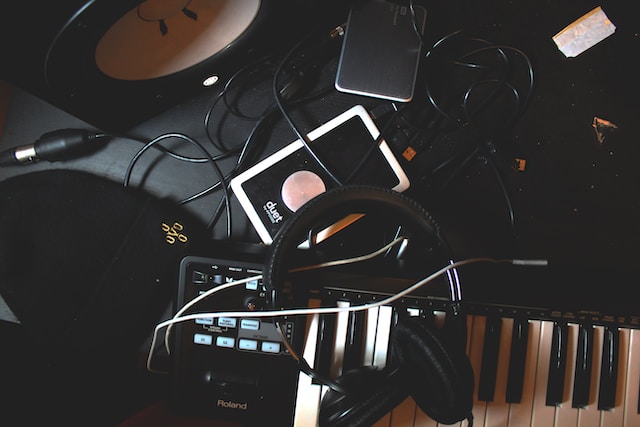When you think about SEO in the realm of music, what comes to mind? Often, the sentiment is far from glowing. In recent times, we’ve witnessed a surge of so-called “quick fixes” in the music SEO arena, many teetering on the edge of legitimate promotional tactics. Consider the instance of Sony Music launching an album named “Some Christmas Music,” strategically aiming to capture voice searches such as “Alexa, play some Christmas music”. This scenario prompts a cautious stance towards music SEO.
Yet, the main inquiry remains: Can artists and those in the music industry approach naming their songs and projects to enhance their search visibility across diverse social media and Digital Service Providers (DSPs)? Let’s delve into this and uncover some answers. More about SEO for your business is on the Bazar.club blog post: https://www.bazar.club/en/post/the-importance-of-seo-for-your-business
What is SEO
Let’s start with the fundamentals, SEO, short for Search Engine Optimization, typically involves modifying the content and framework of a website to boost its prominence on search engines such as Google and, to some extent, Bing. In the current digital era, SEO has become an integral part of marketing strategies for countless startups and media outlets. Yet, in the music industry, SEO often lingers as a secondary consideration rather than a key strategic element.
Can the name of the track make a difference?
Before diving into this topic, it’s important to acknowledge that song naming in the music world is often more an artistic choice than a business one. However, for the purpose of this discussion, I’ll be examining it from a marketing standpoint.
The initial step in optimization involves identifying the key phrases or words you aim to target. But how does this apply to music, where gauging the search popularity of specific words or phrases is challenging? Consider this: millions use Spotify’s search bar daily, yet no music platform offers data on these search volumes. If direct data is unavailable, an alternative approach is to examine top-ranking content – in music terms, this means looking at music charts.
To explore the applicability of SEO principles to naming in the music industry, we’re analyzing two distinctly different platforms. The first is Spotify, representing major Digital Service Providers (DSPs) in music. The second is Instagram’s music feature, used by approximately 1.15 billion users to select songs for their Stories.
Although numerous independent factors affect a song’s popularity, the theory is that focusing solely on naming should reveal the most common “keywords” in platform-specific charts. This will also shed light on how differences between platforms influence the semantic makeup of these charts.
Local SEO for Music Industry
Local SEO (Search Engine Optimization) plays a pivotal role in the music industry, especially for artists, venues, and retailers seeking to establish a strong presence in their local community. The essence of local SEO in the music industry lies in its ability to make music-related businesses and artists more visible in local search results, which is increasingly important in an era where digital presence can significantly influence physical traffic and engagement.
For musicians and bands, local SEO strategies can mean the difference between a packed house and an empty venue. By optimizing their websites and social media profiles with location-specific keywords, they can ensure that when locals search for live music or events, their names appear prominently. This approach is not only effective for established acts but is also crucial for emerging artists trying to break into the local scene.
Music stores and instrument retailers also benefit immensely from local SEO. By incorporating keywords related to their city or neighborhood, these businesses can attract customers who are searching for musical instruments, vinyl records, or music lessons nearby. This targeted approach is vital in an industry where customers often prefer to see and try products in person.
Local SEO for the music industry is not just about being found; it’s about connecting with the community, building relationships, and creating a local fan base. It’s an essential tool for anyone in the music industry looking to make an impact in their local market.
YouTube SEO For Music Industry
YouTube SEO for the music industry is a specialized approach to optimize video content for musicians, music labels, and anyone involved in the music business to maximize their visibility and reach on the platform. In an era where YouTube is one of the primary discovery channels for new music and artists, mastering YouTube SEO is crucial for success in the industry.
For musicians and labels, YouTube SEO begins with understanding how to effectively title, tag, and describe their content.
- Video titles should be compelling and include relevant keywords without sacrificing creativity.
- The use of well-researched tags that represent the genre, mood, and other relevant aspects of the content helps in categorizing and surfacing the video in relevant searches.
- Descriptions are equally important and should provide an engaging summary of the video while naturally incorporating key phrases and links to the artist’s website, social media, or tour information.
- Another critical element is the creation of engaging thumbnails. A thumbnail is often the first impression potential viewers have of a video. A well-designed thumbnail that captures the essence of the video can significantly increase click-through rates.
- Engagement metrics play a vital role in YouTube SEO. The number of views, likes, comments, and shares a video receives directly impacts its visibility on the platform. Artists and music marketers need to encourage viewer interaction and foster a community around their content. This can involve replying to comments, creating video content that prompts viewer reactions, and sharing videos across other social media platforms.
- Consistency in posting is also key. Regular uploads keep an audience engaged and improve channel visibility. Additionally, YouTube’s algorithm favors channels with consistent activity, which can lead to better positioning in search results and recommendations.
Furthermore, leveraging YouTube’s features like playlists, end screens, and cards can enhance user experience and increase the time viewers spend on the channel, another factor positively influencing SEO.
In conclusion, YouTube SEO for the music industry is about more than just technical optimization; it’s about creating a compelling, engaging, and interactive presence that resonates with viewers and turns casual listeners into dedicated fans. As the digital landscape evolves, so too must the strategies used to navigate it, making YouTube SEO an ever-important tool in the arsenal of the modern music industry.


